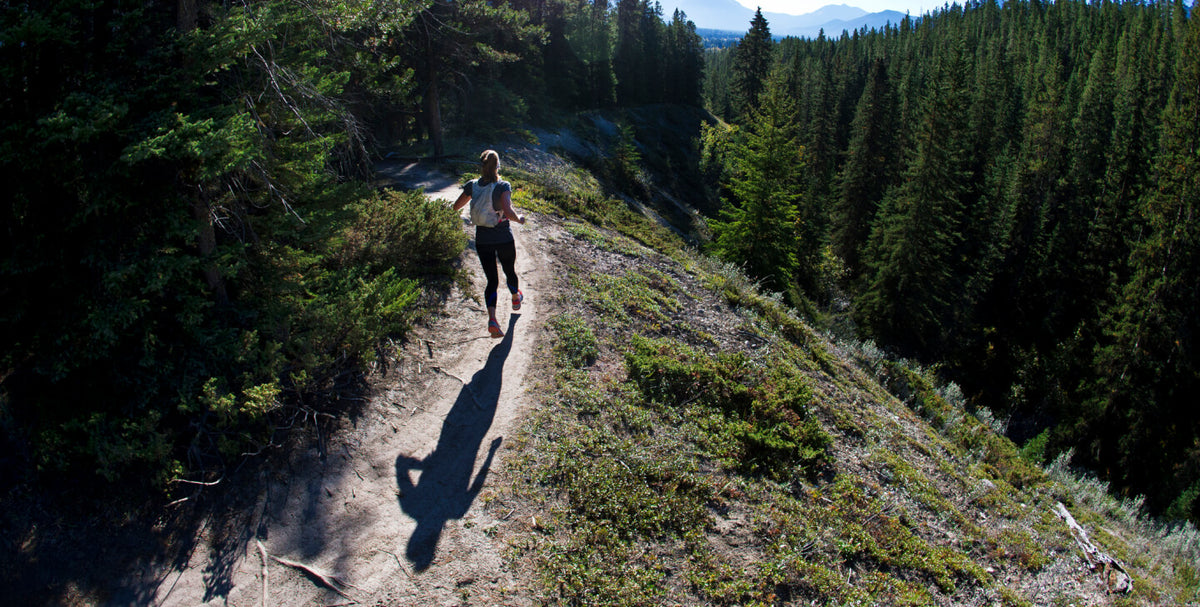Where the Pavement Ends: A Trail Running Manifesto

The Experience of Trail Running
The viscous experience that trail running delivers.
The trail disappears into itself. The mountain is navigable by a web of erosion; some elemental, some biological. A mountain is weathered by life running up and down it. Life flourishes on the trails.
The mountain trail is primitive and elemental. Trails are natural parts of an ecosystem. Animals create them with routine migrations. Humans follow the animals and make the ruts a little deeper. Life moves where the wilderness relaxes its grip.
At one point in our history trail running was a life or death sport. You survived the stimuli causing you to run. That was the goal. That was it. You found the food you were running after or you avoided what was looking to eat you. Humans ran because they needed to hustle to survive. They still do.
For there were trails before roads. It's time to return to the trails and remember what we've since forgotten about being a human.
...
Look over at a mountain. Knowing that you can run to the top if you wanted to is a satisfying feeling. There and back again. The environment becomes more permeable as your skills develop. Your life expands with your ability to move. Your range is linked to your talent. You make your way, literally.
Boundaries fall away as you lace your shoes up. Mental cramps release as your legs tighten.

For there must be fluidity on the trails. There are 1 million variables a second as the ground is ever changing in its element, angle and density. Nothing is straight. You can't check out and just fall forward like on the road. Your unconscious brain is in overdrive so you can't take up any extra bandwidth with conscious processing.
If you really had to think about any one step on a trail run, you'd probably fall. Trail running needs to be thoughtless.
Trail running is catching yourself from falling 10,000 times a minute. It's one controlled crash that you manage to avoid. You are a human moving through the woods. Hunting.
...
Trails offer a right of passage. Certain peoples asked their youth to run to the top of a mountain with a mouthful of water. The marathon monks of China run a marathon a day for years on end, faced with suicide along the trail if they fail. Hermits have roamed their lonely pathways for thousands of years.
Now you get up in the morning and try and catch a few miles before work. Just you and your breath and the trails.
There are trails in the desert. There are trails in the jungle. Trails disappear into both mountains and canyons. There are trails through any farm or ranch land.
There are trails wherever you go. That's how it works.

...
Trails are an aesthetic. Trails are a pallet of environments interpreted from the point of view of the moving human.
Trails are a topology of shapes, a topography of elevations, a geography of locations. It's a history of champions and an anthropological study. It is a science of biology, kinesthetics and mechanics.
To understand yourself, walk the trail. To understand another, walk the trail together.
The trails know nothing and are therefor space enough for your thoughts. So much space that you might just forget about your thoughts there for a bit.
There is no right way to run trails, only your own way. And in your time performing this ancient rite you may mirror the spirit all runners seek. That spirit lives within the freedom to find yourself where the pavement ends.

Wake. Breath. Drink water. Put on footwear. Run trails.
The trail runner must be a pilot, a navigator. The body is her craft. The atmosphere her ocean.
Climb passed your old narrative by dropping the narrative. Just run. Human on trails. No words. Pre-lingual. Just run the trails.




